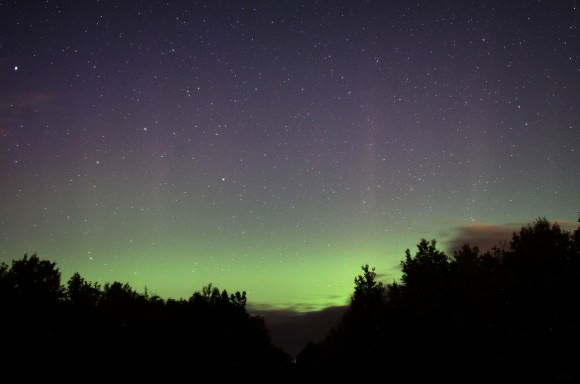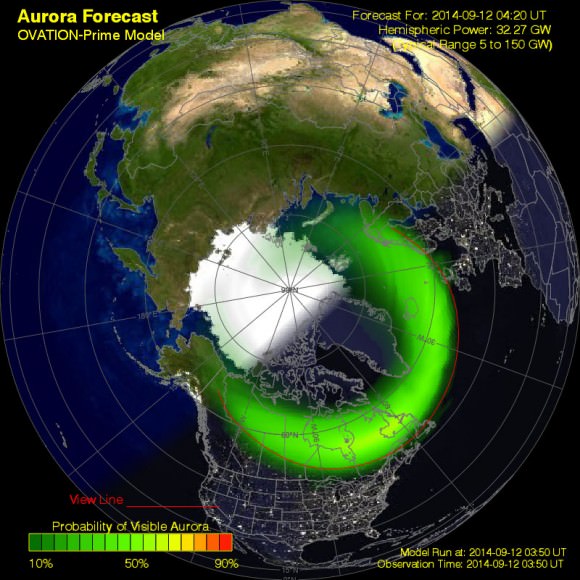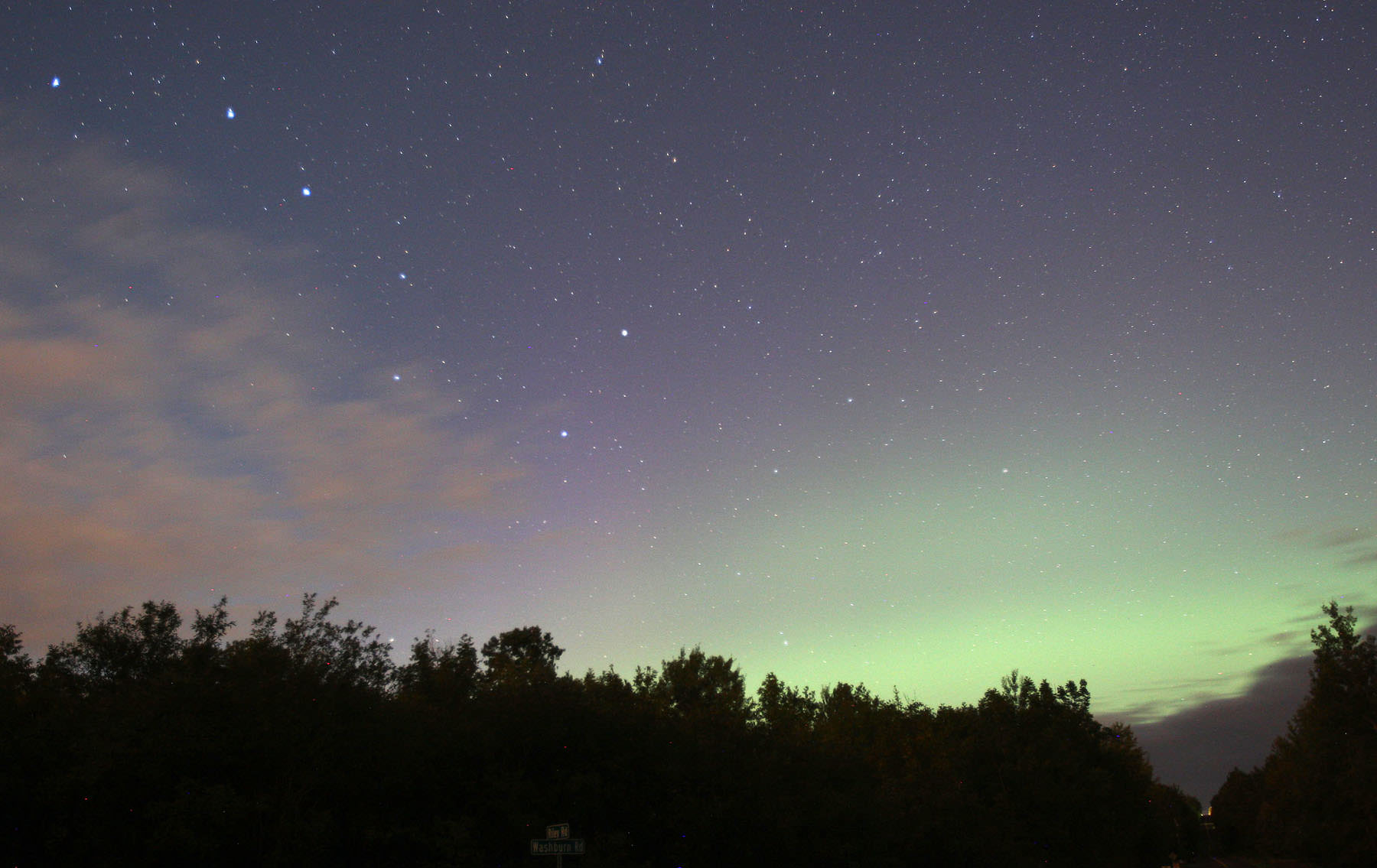Talk of aurora is in the air. Our earlier story today by Elizabeth Howell alerted you to the possibility of northern lights. Well, it’s showtime! As of 9:30 p.m. Central Daylight Time, the aurora has been active low in the northern sky.

From Duluth, Minn. U.S., a classic green arc low in the northern sky competed with the light of the rising gibbous moon. Once my eyes were dark-adapted, faint parallel rays stood streaked the sky above the arc. NOAA space weather forecasters expect this storm to peak between 1 a.m. CDT and sunrise Friday morning September 12 at a G2 or moderate level. Skywatchers across the northern tier of states and southern Canada should see activity across the northern sky. Moonlight will compromise the show, but it rises later each night and dims through the weekend.

This is only the start. Things really kick into gear Friday night and Saturday morning when a G3 strong geomagnetic storm is expected from the more direct blast sent our way by the September 10 X1.6 flare. Auroras might be visible as far south as Illinois and Kansas.
We’ll keep you in touch with storm activity by posting regular updates over the next couple days. Including odd hours. Here are some links to check during the night as you wait for the aurora to put in an appearance at your house:
* Ovation oval – shows the approximate extent of the auroral oval that looks like a cap centered on Earth’s geomagnetic pole. During storms, the oval extends south into the northern U.S. and farther.
* Kp index – indicator of magnetic activity high overhead and updated every three hours. A Kp index of “5” means the onset of a minor storm; a Kp of “6”, a moderate storm.
* NOAA space weather forecast
* Advanced Composition Explorer (ACE) satellite plots – The magnetic field direction of the arriving wind from the sun. The topmost graph, plotting Bz, is your friend. When the curve drops into the negative zone that’s good! A prolonged stay at -10 or lower increases the chance of seeing the aurora. Negative numbers indicate a south-pointing magnetic field, which has a greater chance of linking into Earth’s northward-pointing field and wriggling its way past our magnetic defenses and sparking auroras.

